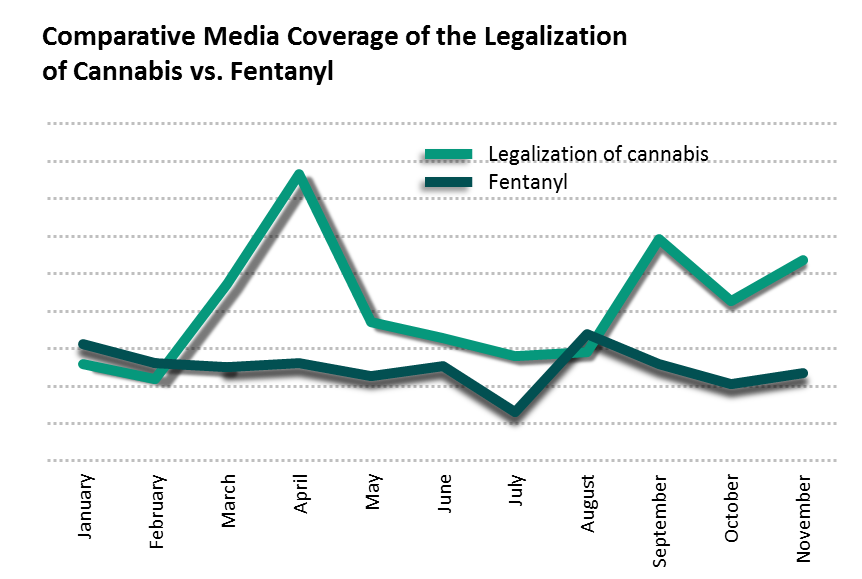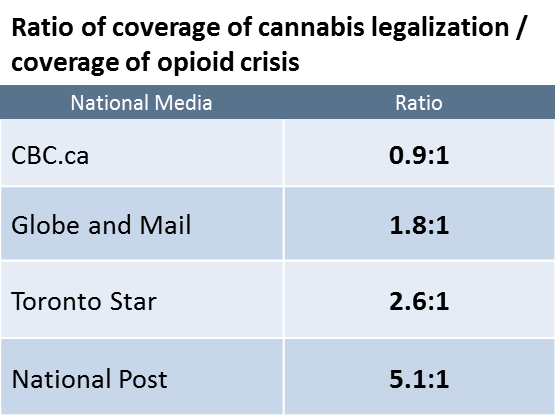Since the Liberal government of Justin Trudeau announced that cannabis would be legalized by July 2018, our media have waged somewhat of a war on pot! Characterized by an overzealous coverage where pot seems to be a growing concern in terms of public health, our media have appeared to neglect one actual and very real problem, one which actually kills people, this time with another drug – the already legal, albeit supposedly “controlled” – fentanyl.
In 2017, pot was the subject of four times more news articles than fentanyl in the overall news coverage. Moreover, the opioid crisis appears to be significantly less covered in nationwide media. Even though the crisis that started in British Columbia is slowly crawling towards the Atlantic, the media coverage of both fentanyl and the resulting opioid crisis appears to have stagnated.
Comparative Media Coverage of the Legalization of Cannabis vs. Fentanyl

Unsurprisingly, British Columbia, where the opioid crisis killed over 706 people in the first 6 months of 2017, is where the difference between the coverage of cannabis and that of fentanyl is the smallest. And although the number of victims keeps increasing elsewhere in Canada, British Columbia is still the only province where the opioid crisis has had more exposure than the upcoming legalization of cannabis.

Of course, we can’t neglect an important factor: politics. After all, Canadian media love nothing more than politics and its related news. In 2017, federal politics has been the number one topic and dominated 13.14% of the news. Provincial/regional politics occupied 10.84% of Canadian media coverage. Therefore, any subject related to politics will have better traction in the public space, and since the debate surrounding the legalization of cannabis involved both levels of government, it was a perfect subject!
Another important factor is the political affiliation of the media outlet and its usual editorial line. When we look at nationwide media, the one that most covered the opioid crisis is CBC/Radio-Canada, where the coverage of the opioid crisis was almost equal to the coverage of the legalization of cannabis (0.9:1). On the other hand, the ratio of coverage from other prominent media paint a totally different picture. For instance, the National Post covered the legalization of cannabis 5.1 times more than it did the opioid crisis:

Of course, we can’t neglect the numerous impacts the legalization of cannabis will have on our society, but while politicians – and media – argue about how to share the revenues provided by the new cannabis industry between Ottawa and the provinces, an important health issue is being casually ignored by both.
After all, when it comes to public health and law, regulations are only as good as the will and the means to enforce them, and to say that our media share a responsibility in shedding a light on those issues in an understatement.


